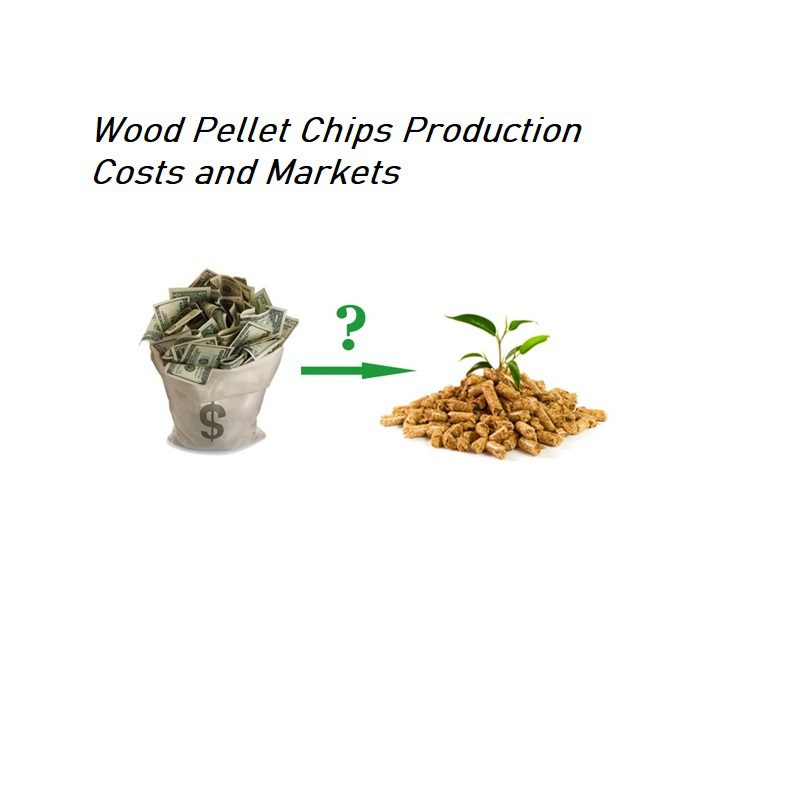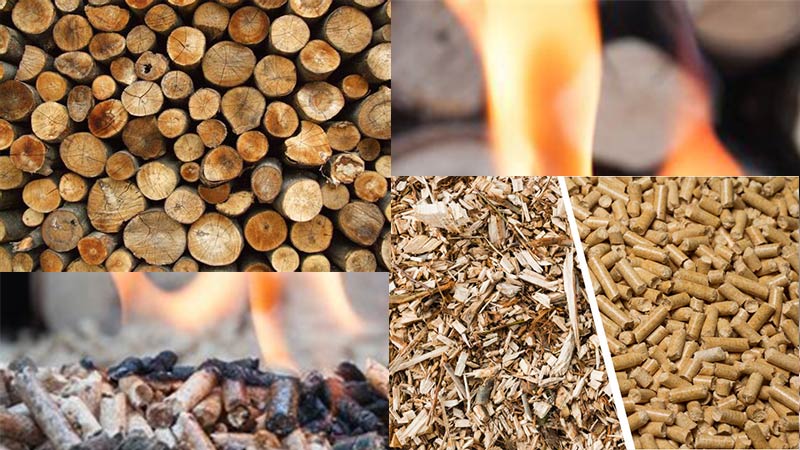
Wood Pellet Chips Production Costs and Markets
Wood pellets are a source of clean, sustainable, renewable, and environmentally friendly energy. According to a recent wood pellet market size analysis report, the global wood pellet market was valued at US$ 11 billion in 2022. The market is expected to enjoy a steady CAGR of 17.5% in the period between 2023 and 2032. This increase in the growth of the market is due to the rise in demand for renewable energy sources as more and more consumers show a preference for clean energy sources.
Besides, most governments are in support of wood pellet production as the industry has helped reduce global warming and the usage of fossil fuels.
The US has the leading wood pellet demand, and it’s also the largest wood pellet producer. A key factor that is responsible for the increase of wood pellet production in the US is the rising demand from the global market. The European Union set a requirement that the EU countries must cut their greenhouse emission by at least 55% and also use 32% of renewable energy sources by 2030. Unfortunately, Europe doesn’t produce enough timber to meet this type of demand. Some of the European countries that are unable to meet their own wood pellets demand have resulted in importing the product from the US.
Further, in Europe and North America, fuel pellets are used for small and medium-scale residential heating in place of oil and electricity due to the rise in the price of the latter.
If you’re an entrepreneur, and you have plans to venture into profitable wood pellet production, or you’re already in this business, you may be wondering how much wood pellet production cost you’ll incur and the possible markets available for selling your product.
Well, this article takes a detailed look at the factors that affect the production costs of wood pellets and the available markets for selling pellet fuel.
Factors That Influence Production Costs

The wood pellet supply cost is influenced by several factors, as explained below.
Labor Costs
To produce wood pellets, you need to hire labor. For instance, most small to medium wood pellet producers rely on logging residues and small-diameter trees as raw materials for wood pellet production. This raw material must be crushed with a hammer mill to obtain consistent-sized wood particles that are small enough to fit into the pellet press. After crushing, this raw material must be dried and sieved before being fed into the pellet machine. Most small and medium-scale wood pellet producers will require an operator to crush, dry, and sieve the raw material.
Once the wood particles are dried and sorted, they are fed into the wood pellet machine. The pellet machine may also need an operator to control it, especially if the manufacturing process isn’t automated. Once the pellets are ready, they are cooled and packaged in small or bulk bags. At this point, you may require another operator to help you package your wood pellets into different packages.
Labor costs will often depend on a plant’s production capacity. However, the estimated labor cost for a plant that produces a capacity of 150,000 tons of pellets per year is equal to about $10 per ton.
Energy Costs
Another factor that drives the wood pellet operational costs up is energy costs. Unfortunately, most pellet plants are powered by electricity or traditional fuels. Secondly, the drying process also requires fuel. If the raw material moisture content is high, the drying cost is higher.
Transportation Costs
Transportation accounts for almost half of the total wood pellet production costs. Transportation costs are a function of the transportation form, travel time, average transport distance, and energy density of the wood pellets. In the US, transportation is usually made by road or railway. Rail transportation is more economical when shipping wood pellets to farther distances. Besides, this mode of transportation is recommended for producers who are concerned about the carbon footprint when using road transportation.
However, most wood pellets producers use trucks as a mode of transportation due to the lack of railcars, delays in delivery, and inflexible rail schedules.
Therefore, when factoring in other costs during the production, you must include rail or road transport costs used to transport the pellets from the pellet mill to the customers.
The Market for Pellet Chips

Reduced electricity consumption due to rising prices of electricity and other fuels, such as natural gas and oil, has led to increased demand for wood pellets. Concern over climate change is another factor that is fueling interest in wood pellets. Governments are also striving to lower the impact of climate change by encouraging the use of renewable sources of energy through tax incentives, subsidies, funding programs, and strict restrictions on carbon emissions.
The pellet market can be divided into residential, industrial, and agricultural sector markets. Residential customers use wood pellets to heat their homes, apartments, schools, offices, and workplaces. Industrial customers are those who need pellets for industrial needs, while in the agricultural sector, wood pellets are used as a substitute for fuel oil.
Residential Market
Wood pellets are popular for heating and cooking because of their sustainability and the fact that they provide clean energy. Thus, they provide an environmentally friendly alternative to power, oil, and gas.
According to a recent survey, the wood pellet revenue from the residential market accounted for USD 3.71 billion in 2021. The revenue is expected to grow at a significant rate in the coming years, which means there is a massive wood pellet residential market ready to be exploited.
Industrial Market
Green gas emission has become an environmental problem for many governments, which is why most industrial players are using alternative renewable sources of energy such as pellets. Besides, the use of fuel pellets is more economical than using gas, oil, or electricity.
The global industrial wood pellet market size was projected at USD 5.54 billion in 2019. Although the Covid-19 pandemic led to a negative demand shock for all sectors, including the wood pellets sector, the global pellet market has shown huge growth after the pandemic due to increased market demand. The market is projected to reach USD 7.96 billion by 2027.
Currently, energy plants are the largest industrial consumers of wood pellets. Wood pellets are also used to turn turbines to generate electricity in industries. A notable example is the Drax power station in the UK that transitioned to the use of wood pellets from coal to help fight climate change.
Agricultural Sector
Wood pellets help offset costs in the agricultural sector by replacing fuel oil and other heat sources. Reducing fuel costs increases the self-sufficiency and economic viability of farms.
Moreover, wood pellets are also used in farms as bedding and mulch. Pellets are used in farms as a source of high-quality and low-dust animal bedding, especially for horses. Further, pellets are spread over the soil as they form a clean and biodegradable layer that reduces erosion and weed while also adding organic matter to the soil.
Conclusion
Wood pellets can be sold in a variety of markets. Hopefully, if you’re a wood pellet producer, you can now come up with an accurate analysis of wood pellet production cost data, and you’re informed on the available markets for your product.
Understanding the operating cost and market for your wood pellet production business is only the first step to running a profitable pellet production business. You also need to choose a reliable wood pellet-making plant.
At TCPEL, we produce good quality wood pellet mills that have high output. We sell our machines both at home and abroad. We have a team of professional engineers who will provide detailed answers to your questions. Feel free to contact us today for all your wood pellet production needs, and we will get back to you in no time
Talk to An Expert
SHARE THIS POST
Talk to An Expert
